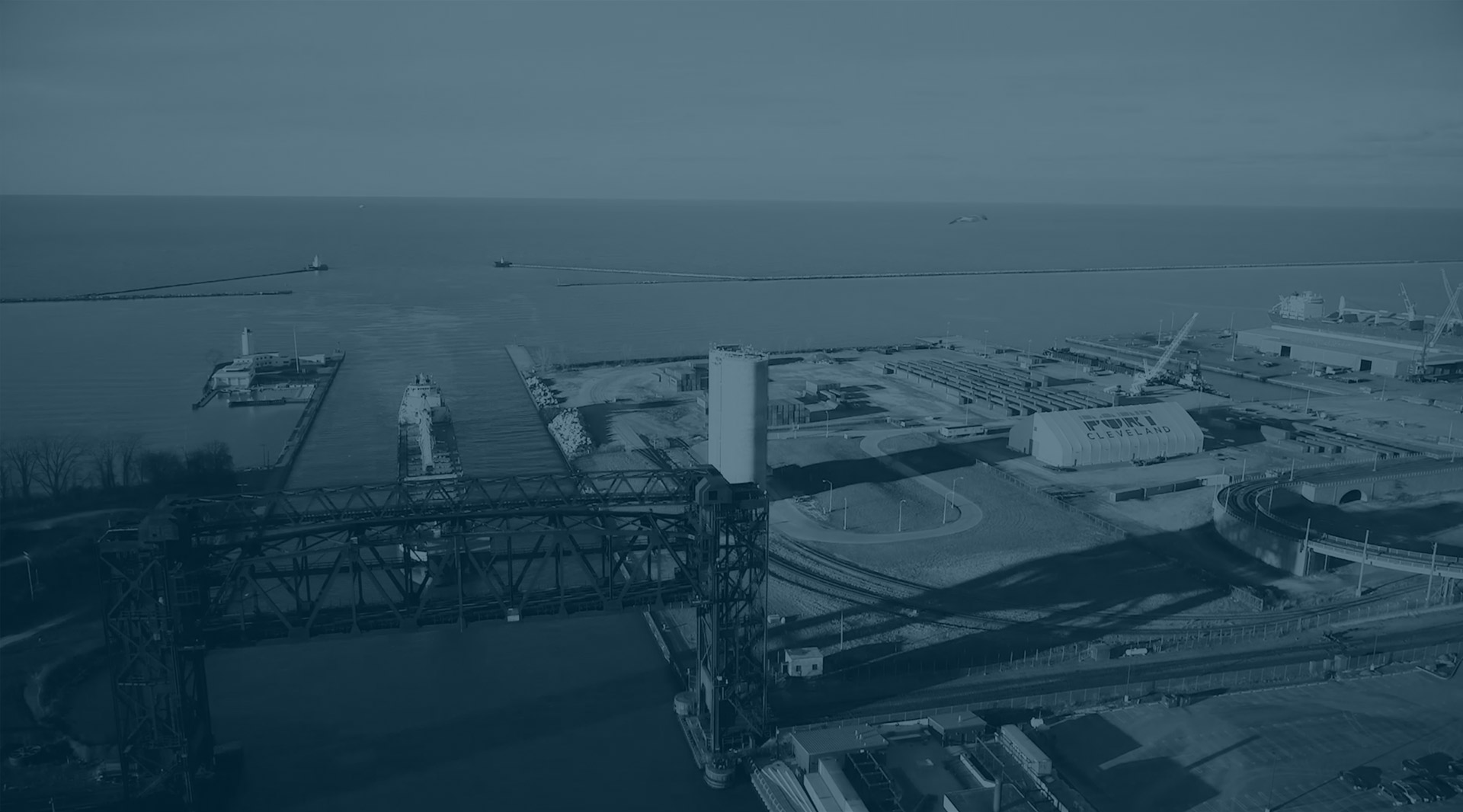LOGISTEC
How to Ship to the Great Lakes
MOVING CARGOS ACROSS THE ATLANTIC OCEAN TO AMERICA’S HEARTLAND
From the earliest days of settlement in America, the Great Lakes and St. Lawrence River have been used to move cargos from America’s Heartland to the world — and vice versa.
In fact, the origin of Great Lakes shipping began in the 1800s with the industrialization of the Midwest. When farmers, miners and loggers of the region needed to move their goods, they turned to Great Lakes fleets to serve their industries. In turn, this helped develop thriving port cities in America, like Cleveland.
In present day, ports located in the Great Lakes region, like the Port of Cleveland, handle cargos from across the world, supporting major industries that are critical to the global economy, such as agriculture, automotive, construction and energy.
For businesses across the globe, the same advantages that existed at the genesis of Great Lakes and St. Lawrence River shipping exist today.
Ultimately, a faster door-to-door transit, ample capacity and direct access to a market containing half of all U.S. households and manufacturing means that products reach their final destination before the competition.
So, how does shipping to the Port of Cleveland actually work?
Shipping to the Port of Cleveland from anywhere in the world is simple. In fact, it’s so simple we can break it down to three easy steps.
As an example, let’s track a shipment that originates in Europe, specifically in Antwerp, Belgium.
Step 1: Containerized or non-containerized cargo is loaded on a vessel
Cargos are loaded on a vessel and prepared for shipping. These vessels, like The Spliethoff Group’s — our vessel partner for the Cleveland Europe Express, can carry more than 70,000 tons of cargo in a single voyage. Just for comparison, it would take 2,800 trucks to do the same exact work of one vessel.

In addition to simplifying the supply chain by using water transport, the size of these vessels also offers economic and environmental benefits by saving on fuel costs and, more importantly, releasing fewer emissions along the way.
Step 2: The vessel crosses the Atlantic Ocean and arrives at the Port of Cleveland
The map above shows a typical shipping route from a city in Europe, like Antwerp, to Cleveland in America.

Once the vessel leaves the port of origin, it takes an all-water route across the Atlantic Ocean and through the Great Lakes-St. Lawrence Seaway system until it arrives at the first major U.S. port of call, the Port of Cleveland. In total, the trip between Cleveland and Antwerp has an average sailing time of 13 days.
When you compare the timing of the same trip from Europe to other ports, like those on the east coast, you’ll find that shipping to the Port of Cleveland is actually 5-10 days faster. That means getting products in front of customers ahead of the competition.
Curious why it’s so much faster? It comes down to added efficiencies and capacities.
When cargo arrives at the Port of Cleveland, our terminal operator, LOGISTEC, handles the shipment, which can include bulk and general cargo such as breakbulk, intermodal containers and project cargo.
Ultimately, this partnership reduces the amount of time cargos are stuck sitting at a port, speeding up the shipping process from origin to end-user.
Just how much faster does this make shipping to the Port of Cleveland? Actually, a lot.
The span of time a vessel unloads at the Port of Cleveland is minimal, typically just over two days. Compare the same process at other ports, like U.S. east coast, and you’ll find that the Port of Cleveland unloads cargo about three to five days faster.
Simply put, while other ports have vessels sit at the dock with your cargo, we keep it moving to its final destination.
Step 3: Your cargo is connected to its final destination
Once the cargo is moved from water to land, it’s connected to the final user. The Port of Cleveland’s geographical location offers direct access to its hinterlands (shown below) — major U.S. markets in Ohio, Pennsylvania and Michigan (i.e., Cleveland, Columbus, Detroit and Pittsburgh) — all within just one day of trucking.

Why is the Port’s geographic location so important to businesses? Half of all U.S. households, businesses and manufacturing plants are located within an 8-hour drive of the port. That means access to prime markets faster and more efficiently.
To connect your cargo, the Port of Cleveland has strong, locally established multimodal solutions, including an intermodal network of railroads and inland ramps or terminals where containers can be drayed, two Class 1 Railroads, CSX and Norfolk Southern. OmniTRAX, a national short-line railroad, provides all switching services on port property, and immediate highway access for truck routing and drayage.
Are you ready to ship to the Great Lakes?
Work with the Port of Cleveland — the premier port on the Great Lakes. We’re your business’s one-stop for shipping, logistics, capacity and access solutions.
Contact us today at 216.241.8004 or learn more on our website.

